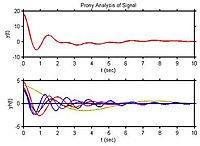
Photo from wikipedia
Using the fσ8(z) redshift space distortion (RSD) data, the $\sigma _8^0\!-\!\Omega _\mathrm{ m}^0$ tension is studied utilizing a parametrization of growth rate f(z) = Ωm(z)γ. Here, f(z) is derived from… Click to show full abstract
Using the fσ8(z) redshift space distortion (RSD) data, the $\sigma _8^0\!-\!\Omega _\mathrm{ m}^0$ tension is studied utilizing a parametrization of growth rate f(z) = Ωm(z)γ. Here, f(z) is derived from the expansion history H(z) which is reconstructed from the observational Hubble data applying the Gaussian process method. It is found that different priors of H0 have great influences on the evolution curve of H(z) and the constraint of $\sigma _8^0\!-\!\Omega _\mathrm{ m}^0$. When using a larger H0 prior, the low redshifts H(z) deviate significantly from that of the ΛCDM model, which indicates that a dark energy model different from the cosmological constant can help to relax the H0 tension problem. The tension between our best-fitting values of $\sigma _8^0\!-\!\Omega _\mathrm{ m}^0$ and that of the Planck 2018 ΛCDM (PLA) will disappear (less than 1σ) when taking a prior for H0 obtained from PLA. Moreover, the tension exceeds 2σ level when applying the prior H0 = 73.52 ± 1.62 km s−1 Mpc−1 resulted from the Hubble Space Telescope photometry. By comparing the $S_8\!-\!\Omega _\mathrm{ m}^0$ planes of our method with the results from KV450+DES-Y1, we find that using our method and applying the RSD data may be helpful to break the parameter degeneracies.
Journal Title: Monthly Notices of the Royal Astronomical Society
Year Published: 2020
Link to full text (if available)
Share on Social Media: Sign Up to like & get
recommendations!